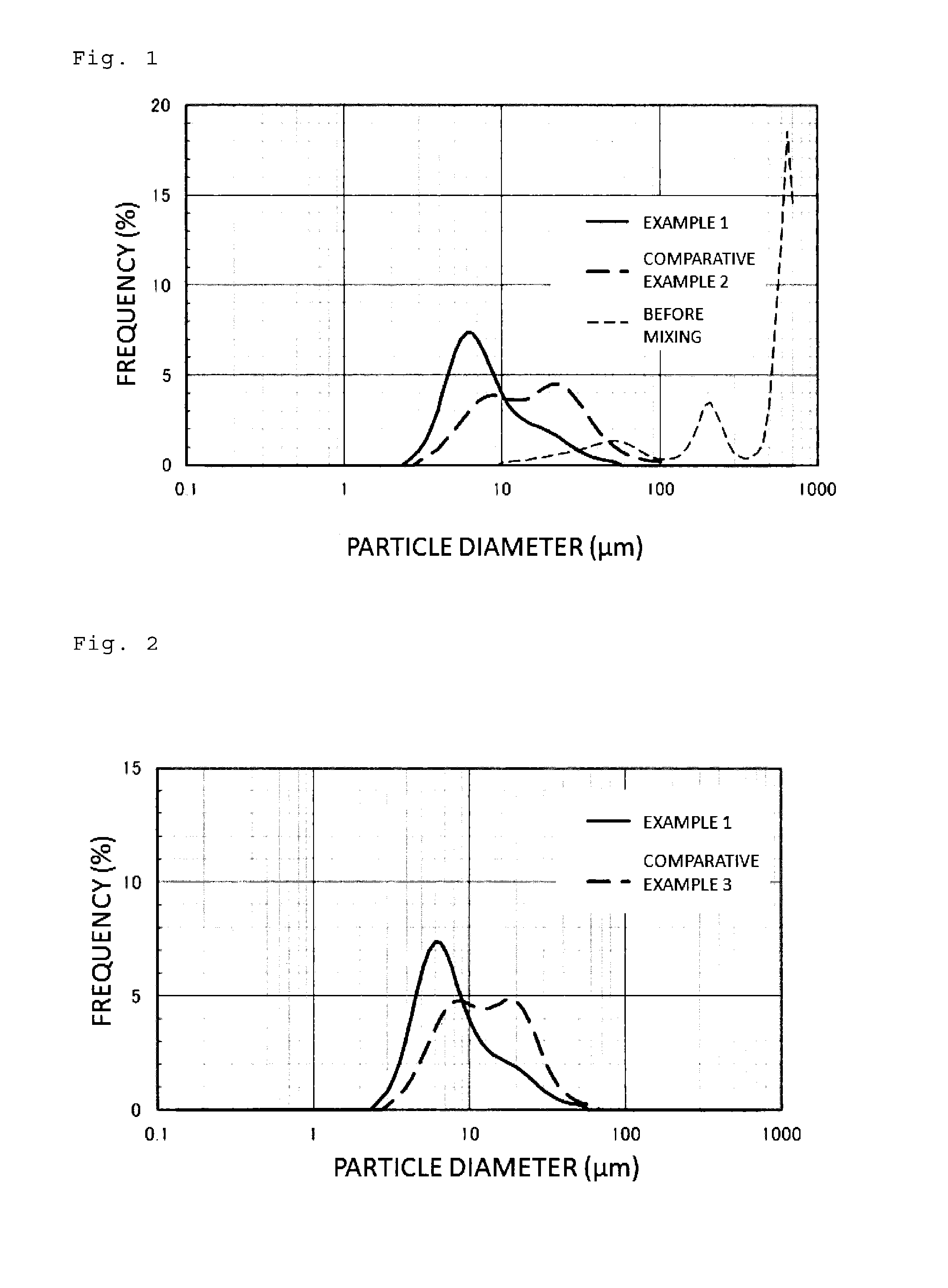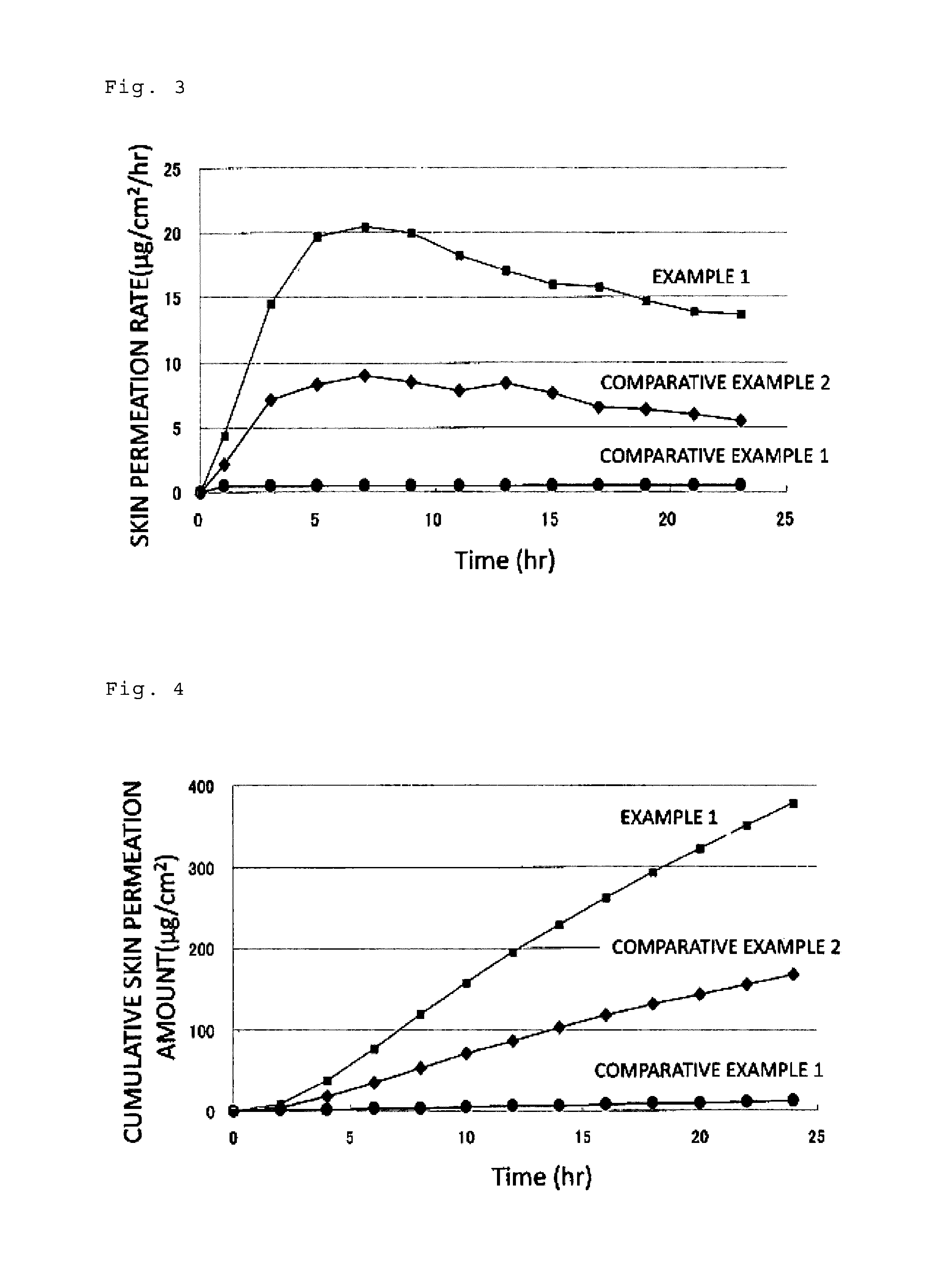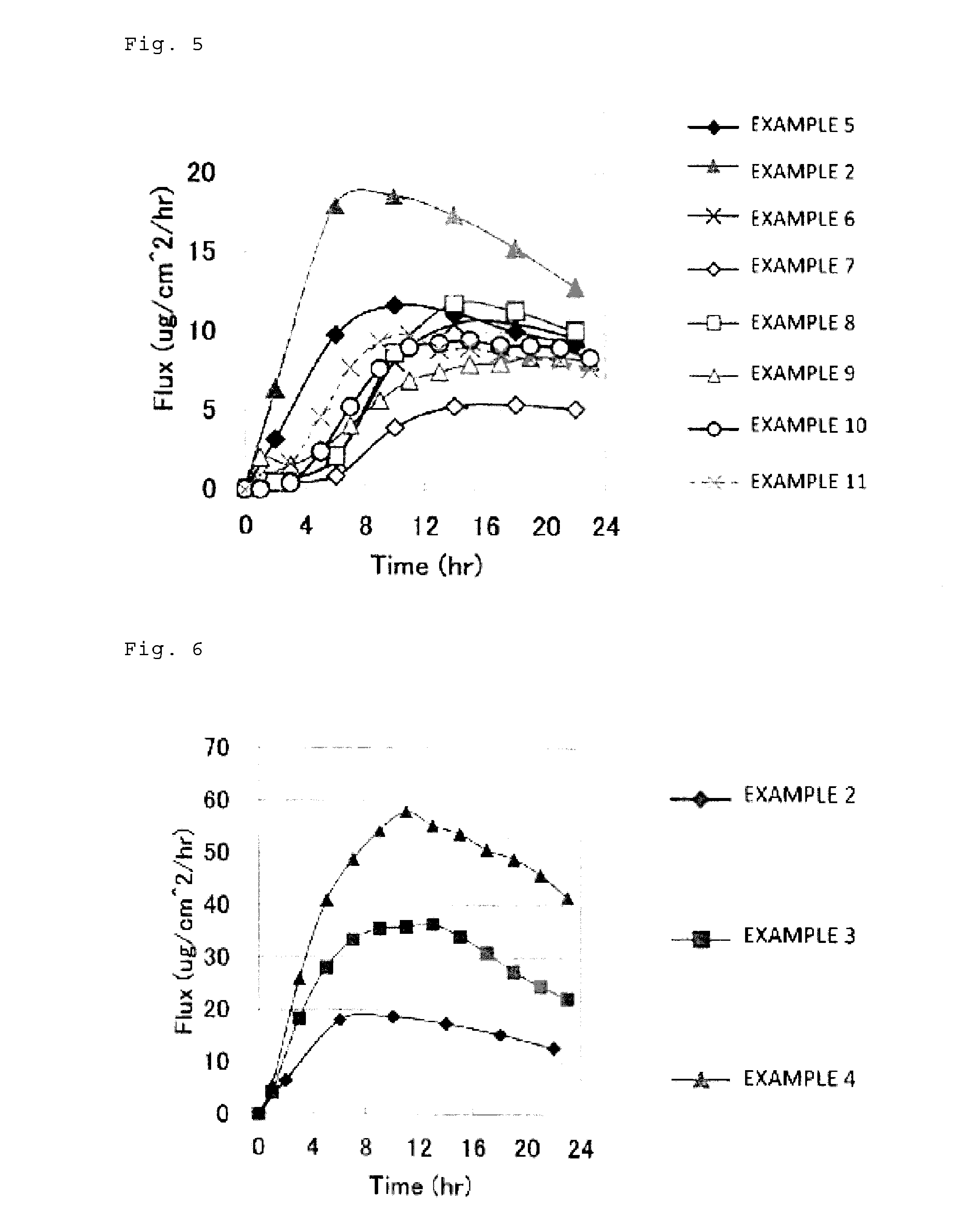Patch and method for producing the same
- Summary
- Abstract
- Description
- Claims
- Application Information
AI Technical Summary
Benefits of technology
Problems solved by technology
Method used
Image
Examples
example 1
[0102]First, 6 parts by mass of sodium acetate, 7 parts by mass of asenapine maleate (average particle diameter: 30 μm) (the number of moles of sodium acetate:the number of moles of asenapine maleate=4:1), and 7 parts by mass of liquid paraffin together with 10 parts by mass of toluene were placed into a 50-mL vessel, and subjected to contact-mixing at room temperature (25° C.) for 120 minutes using a propeller mixer at 200 rpm. Thereby, a mixture was obtained.
[0103]Then, to this mixture, 10 parts by mass of isopropyl palmitate (IPP), 18 parts by mass of a styrene-isoprene-styrene block copolymer (SIS), 52 parts by mass of a petroleum-based tackifier resin (trade name: ARKON, manufactured by Arakawa Chemical Industries, Ltd.), and an appropriate amount of a solvent were added and mixed together. Thus, a homogeneous adhesive agent layer composition was obtained. Table 1 shows the composition of the adhesive agent layer composition (excluding the solvent such as toluene).
[0104]Subsequ...
example 2
[0114]First, 4.9 parts by mass of sodium acetate, 6 parts by mass of asenapine maleate (average particle diameter: 30 μm) (the number of moles of sodium acetate:the number of moles of asenapine maleate=4:1), and 29.1 parts by mass of liquid paraffin together with 10 parts by mass of toluene were placed into a 50-mL vessel, and subjected to contact-mixing at room temperature (25° C.) for 120 minutes using a propeller mixer with the number of revolutions of 200 rpm. Thereby, a mixture was obtained. Note that the particle diameter distributions of the sodium acetate before mixing and the obtained mixture in this case were measured. As a result, the sodium acetate before mixing had D50 of 517.6 μm, and the mixture had a particle diameter D50 of 6.93 μm.
[0115]Then, to this mixture, 5 parts by mass of isopropyl palmitate (IPP), 15 parts by mass of a styrene-isoprene-styrene block copolymer (SIS), 40 parts by mass of a petroleum-based tackifier resin (trade name: ARKON, manufactured by Ara...
example 3
[0118]A patch was obtained in the same manner as in Example 2, except that: the amount of asenapine maleate was 12 parts by mass, the amount of sodium acetate was 7.3 parts by mass (the number of moles of sodium acetate:the number of moles of asenapine maleate=3:1), and the amount of liquid paraffin was 20.7 parts by mass. Table 4 shows the composition of the adhesive agent layer in this case.
PUM
| Property | Measurement | Unit |
|---|---|---|
| Length | aaaaa | aaaaa |
| Adhesivity | aaaaa | aaaaa |
| Mass ratio | aaaaa | aaaaa |
Abstract
Description
Claims
Application Information
 Login to View More
Login to View More - Generate Ideas
- Intellectual Property
- Life Sciences
- Materials
- Tech Scout
- Unparalleled Data Quality
- Higher Quality Content
- 60% Fewer Hallucinations
Browse by: Latest US Patents, China's latest patents, Technical Efficacy Thesaurus, Application Domain, Technology Topic, Popular Technical Reports.
© 2025 PatSnap. All rights reserved.Legal|Privacy policy|Modern Slavery Act Transparency Statement|Sitemap|About US| Contact US: help@patsnap.com



